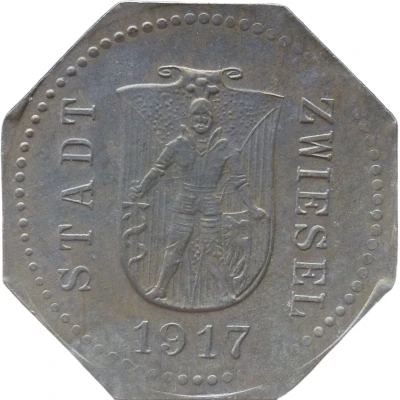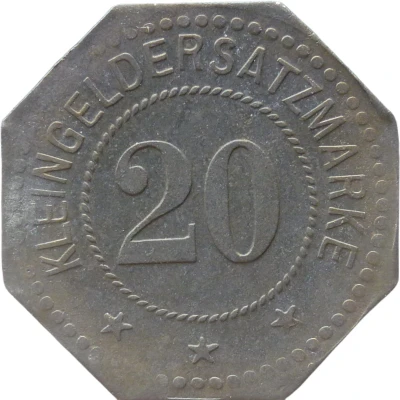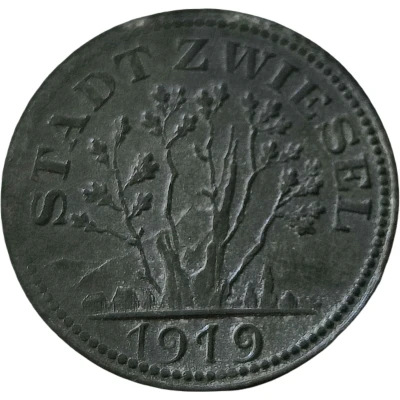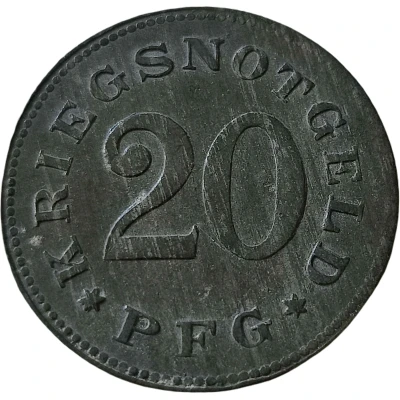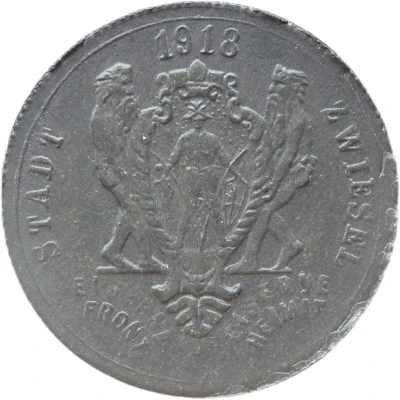
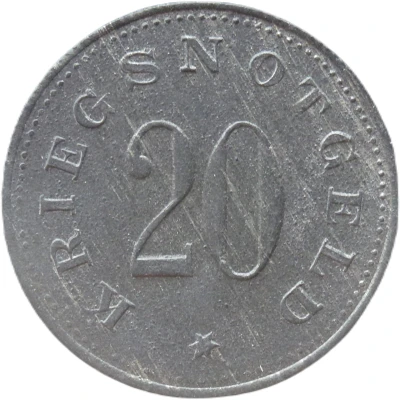

© Willem63 (CC BY-NC-SA)
20 Pfennigs - Zwiesel
1918 year| Zinc | 3.1 g | 24.3 mm |
| Issuer | City of Zwiesel (Federal state of Bavaria) |
|---|---|
| Type | Standard circulation coin |
| Year | 1918 |
| Value | 20 Pfennigs (20 Pfennige) (0.20) |
| Currency | Mark (1914-1924) |
| Composition | Zinc |
| Weight | 3.1 g |
| Diameter | 24.3 mm |
| Thickness | 1.3 mm |
| Shape | Round |
| Technique | Milled |
| Orientation | Medal alignment ↑↑ |
| Demonetized | Yes |
| Updated | 2024-10-04 |
| Numista | N#78300 |
|---|---|
| Rarity index | 85% |
Reverse
Pearl rim surrounding legend with denomination centered
Script: Latin
Lettering:
KRIEGSNOTGELD
20
✶
Edge
Reeded
Comment
Issuing body: [Stadt, Bayern].Interesting fact
The 20 Pfennigs - Zwiesel 1918 coin was minted during a time of economic turmoil in Germany, known as the "Inflationary Period" (1914-1923). During this time, the value of the German mark (the national currency) plummeted, and prices for everyday goods skyrocketed. As a result, many Germans turned to alternative forms of currency, such as local emergency currencies like the 20 Pfennigs - Zwiesel 1918 coin. This coin, made of zinc and weighing 3.1 grams, was issued by the City of Zwiesel in Bavaria and was used as a substitute for the rapidly devaluing national currency. Despite its humble origins, the 20 Pfennigs - Zwiesel 1918 coin remains a fascinating piece of German history and a testament to the resourcefulness of the German people during a time of economic hardship.
